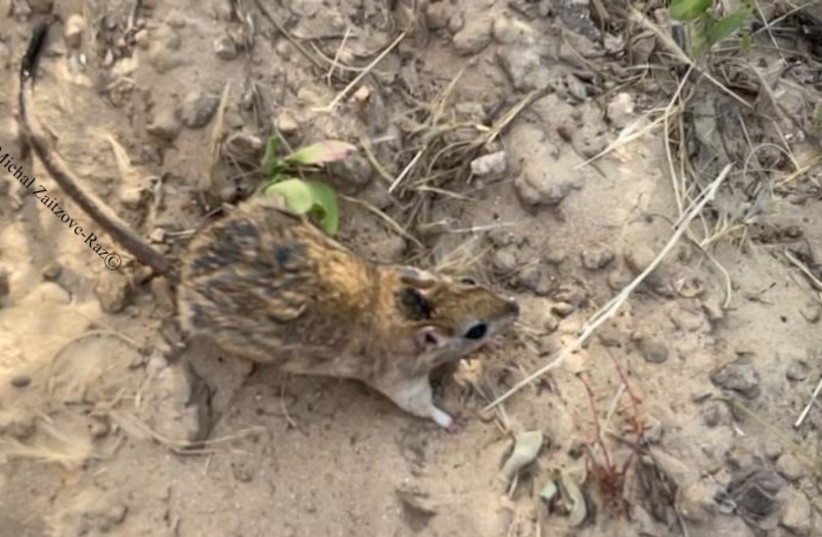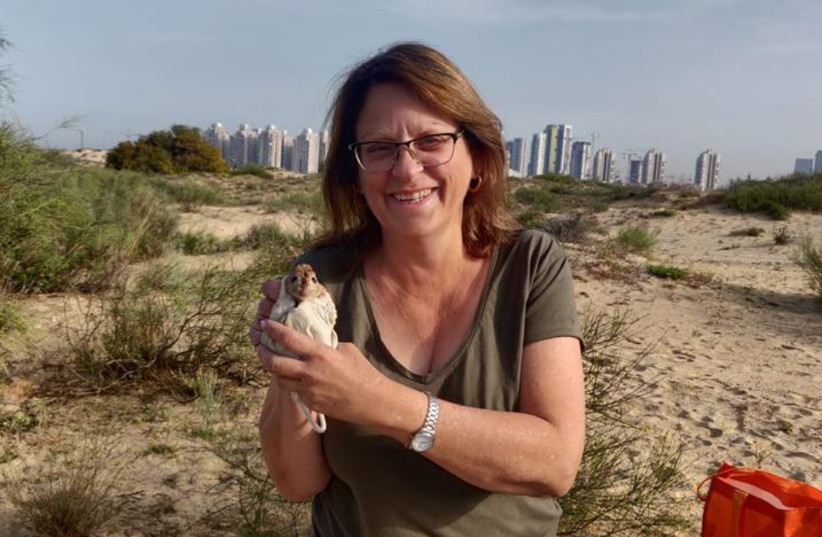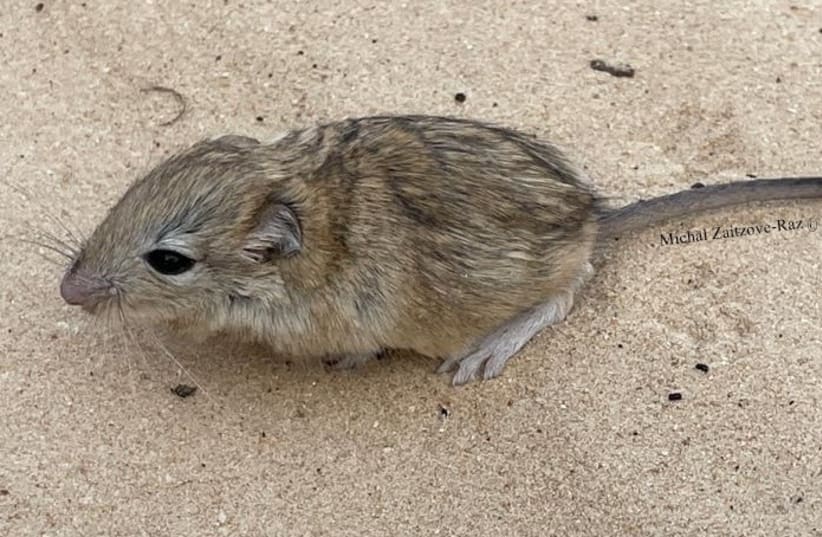In a crucial standoff between urban development and wildlife preservation, the future of a rare indigenous rodent, Buxton’s Jird, hangs in the balance.
The city of Rishon Lezion is poised for expansion, eyeing the transformation of 300 to 600 dunams within a sprawling 9,000-dunam property. The ambitious plan aims to provide affordable housing and enhance the local landscape for residents’ enjoyment.
This proposal comes with a twist, however: Nestled within the blueprint’s more than 8,000 dunams of designated conservation space is a delicate ecosystem under threat.
Will urban renewal threaten the endangered jird?
In 2022, the Rishon Lezion Municipality committed to pay NIS 2 billion for the IDF to leave the land it has been using for training. The land is owned by the municipality, the government, and private owners.
This enclosed area had mainly been left to its own devices, allowing the emergence of an on-base nature reserve. Within the boundaries of this reserve, diverse communities of native wildlife now thrive without constraint.


Following the acquisition of this land, the vision, as outlined by Deputy Mayor Liel Even-Zohar, encompasses the construction of several thousand apartment units tailored for young couples, senior residents, and affordable rentals. These residential structures would be strategically positioned adjacent to existing apartments and encompass only a fraction of the available land – several hundred dunams, to be precise.
As envisaged by the city, the remaining vast expanse promises to become a sanctuary, benefiting both human inhabitants and the region’s wildlife.
Environmental activists and scientists, however, say disturbing any of this space could put the Buxton’s jird at risk.
There are only three species of jird in Israel, explained Dr. Merav Ben-David, Professor of Wildlife Ecology at the University of Wyoming, who has helped map the jird of Israel. The first variety, aptly named the common jird, lives up to its label by its widespread presence. A second is known as the Sundevall’s jird and it is classified as vulnerable. However, their native counterpart, the Buxton’s jird, has been classified as an endangered species.
“Buxton’s jird is at high risk of extinction in the Negev,” Ben-David said, with the nature reserve army base in Rishon Lezion, where these jirds flourish, serving as a vital sanctuary for this rare species.
“If it was me who was in charge, I would minimize any development on their habitat,” she told The Jerusalem Post. “I would leave it inaccessible to the public, guard, and protect it.”
According to Michal Zaitzove-Raz, a zoologist and small mammal ecologist at the Steinhardt Museum of Natural History at Tel Aviv University, “If the construction and real-estate development plans proceed, we might bid farewell to the jird forever, as well as its companion, the Greater Egyptian Gerbil, which also resides in the same environment. The jird represents a healthy coastal ecosystem that protects us, and it’s advisable that, in return, we protect it.
“I hope that raising awareness about the importance of the rare jird’s existence and the ecological balance it helps provide will help halt the expected destruction for our sake and the sake of future generations.”
While the project seems small, it will undoubtedly upset the ecological stability, she said.
“The minute the tractors roll in, the jird will no longer be there,” Zaitzove-Raz said.


Even-Zohar said the city’s reaction to the activists’ response was one of surprise. Rishon Lezion has committed to safeguard 90% of the area for natural purposes, she said, adding that while wildlife has thrived in the region, the control of the space had rested with the IDF, which could have utilized it as it saw fit.
“We are saving the space,” Even-Zohar said. “We are taking it back and returning it to the public.”
She hailed the agreement made by the city with the IDF as “historic” due to the rarity of purchasing military bases. The IDF has said it will continue to use the space over the next several years while it moves local operations to the South, aiming for the area to be fully functional within the next five to 10 years.
The construction project is a means to finance the money that the city committed to get the IDF off the land, Even-Zohar said. In addition, the city wants to open the beachfront to residents by tearing down the IDF fence and enabling people to travel freely.
“The public will benefit from the open sea shore and the vegetation and animals,” she said. “We will take care of them. This is best for everyone.”
Even-Zohar said the building project was “environmental” and “more in favor of nature than people. I think it is a win-win.”
Even-Zohar added that an orderly survey of the area is required and that the city will do one.
This is the second time the city has invested in a property meant to provide residents with more green space, she said, adding that the municipality recently purchased 55 dunams of Givat Hairusim from a private developer, removing waste and establishing open space for the public.
“The issue is not 600 dunams,” Even-Zohar said. “The issue is that some people are against development. They want everything to be conserved. But we are speaking about real life, and in real life, the municipality has to pay for this area, and the public wants to go to the beach. We could have built on all of it. Conservation and minor development is better than just development.”
While conceding that Even-Zohar might be justified if this were the country’s sole project, Ben-David said the current era was witnessing an unmatched extinction rate since the extinction of the dinosaurs.
“We are ruining the planet we live on every day by not carefully considering what we do,” she said. “There is nothing significant about jird No. 5,567. But it means the extinction of yet another species and is part of the mass extinction we are causing to this planet. Is building on another 600 dunams worth driving another species to extinction when we are already killing everything else?”
“Their end will be our end,” Ben-David said. “We are cutting the branch of life on which we are sitting.”
The Environment and Climate Change portal is produced in cooperation with the Goldman Sonnenfeldt School of Sustainability and Climate Change at Ben-Gurion University of the Negev. The Jerusalem Post maintains all editorial decisions related to the content.
